This Italian restaurant opened in 1989, with its maître d’ being the co-founder Giancarlo Paterlini. The other co-founder is the chef Suzette Gresham, who grew up locally and worked at the San Francisco hotel Donatello before opening Acquarello. The restaurant was granted a Michelin star in 2007 and a second in 2015. It is in Russian Hill, the setting for the superb Tales of the City novels by Armistead Maupin. The area is named after a 19th century cemetery for Russian seamen that used to be here, and although these days the Russian community of the city lives mainly in the Richmond district, the name stuck.
Acquerello has a small waiting area that leads into the carpeted dining room, which has well spaced tables, pink banquettes, yellow walls with modernist paintings and a ceiling with exposed beams. There was some background music, but it was very subdued, and the carpet meant that noise levels in the room were low. The lighting was of the gloomy levels favoured in so many US restaurants, hence the matching photos. Chef and owner Suzette Gresham was not in this evening.
There is a full a la carte menu (three courses are $95, four courses $120) as well as a nine course tasting menu at $185. The wine list is substantial, with almost two thousand labels in all. Most are Italian, with some US wines as well as a selection of champagne. I spotted one bottle at $45 but most appeared to be over $100, with broad coverage across the regions of Italy. The young sommelier was excellent, friendly and knowledgable. Examples were Joseph Phelps Freestone Vineyards Chardonnay 2013 at $88 for a bottle you can find in a local shop at $50, Heintz Littorai Chardonnay 2013 at $160 compared to a retail price of $76, and Gaja Barabaresco 1988 at a distinctly ambitious $895 for a wine that will set you back about $242 in a shop.
A series of nibbles began the meal. Lentil crisp with fennel purée and fennel "pollen" (tiny dried beads of fennel flowers) was a rather uninspired beginning, the crisp being rather dense and the overall flavour vaguely smoky (13/20). Compressed strawberry was served on a spoon with rhubarb jelly, basil oil and crisp filo dough. The fruit itself had decent flavour, but basil was not an obvious flavour pairing, and anyhow why would you serve a strawberry at this stage of a meal (13/20)? A little better was a lobster "sausage" wth toasted brioche, jalapeño and lemon jelly. The lobster was tender enough and the acidity of the lemon worked quite well with it, though the pepper barely put in an appearance (14/20). The best nibble was pea and Fontina (an Italian cow milk cheese) savoury custard with pea shoots, pea sprouts and a little red bell pepper, seemingly with shaved Honduran chocolate described as gianduja. Given that this is really a chocolate spread I am a little confused as to what the waiter meant; whatever it was, it was subtle to the point of invisibility. However the pea custard worked well, the flavour quite good and the texture smooth (15/20). Bread was bought in from a local bakery called Panorama. Olive bread was reasonable, the white bread pretty ordinary.
The first official course was ora, a farmed "king salmon" (a marketing name for chinook salmon, ora being originally a New Zealand salmon introduced into the United States and actually a Maori word) that had been cured and then cooked sous vide for an hour. It was served with a beetroot purée, ramp (wild onion) relish, lemon gel and toasted sourdough. This was a pretty dish that actually worked very well, the salmon having decent flavour, the beetroot excellent, the lemon gel bringing acidity that cut through the inherent oiliness of the fish (16/20).
This was followed by a house specialty that apparently has been on the menu since the restaurant opened. Ridged pasta came with foie gras and marsala and was laced with black truffles. The truffles used here are from Perigord, and are preserved in olive oil to be used when the season finishes. This was a rich but very enjoyable dish, the pasta having excellent texture, the foie gras adding its luxury and the truffles bringing their heady aroma (17/20).
This was followed by a cuttlefish "tagliatelle", the cephalopod being vacuum packed, frozen and then cut into strips in a ham-slicer to resemble pasta, cooked with garlic, capers and served with a little lobster and a fashionable sea grass called agretti (saltwort, which tastes vaguely like spinach), with a garnish of chilli flakes. The cuttlefish itself was reasonably tender and the chilli added a pleasant kick. This dish is hardly original, having been done at Koffmann's for example, whose version has the edge, but it was certainly very enjoyable (15/20).
Rabbit (farmed rather than wild) came with compressed strawberry (a reprise of its earlier appearance as a nibble) with balsamic vinegar, braised chard, Californian morels and pickled chard. The rabbit, wrapped in pancetta to avoid drying out, was very pleasant, the morels impressive (15/20).
For dessert, lemon yoghurt panna cotta of red fruits came with, you guessed it, compressed strawberry (clearly the fruit of the day), mango and mint. The fruit was fine and the texture of the panna cotta was smooth, but why the compressed strawberries, like some overused character actor playing multiple roles in a local theatre, put in yet another appearance eludes me. At least at this stage of the meal the fruit made more sense (14/20). Coffee is apparently imported from Milan, and was quite rich and of good quality. With this came a trolley of petit fours. As well as the expected array of chocolates there was a pina colada mousse served in a shot glass, biscotti with fruit filling and a raspberry pate de fruits that was a touch on the hard side.
Service was very professional, the waiters middle aged and experienced and without a tattoo in sight. The bill came to a pretty hefty $249 per person before tip, $300 (£205) in all, with just a few glasses of wine to drink. If you ordered three courses and shared a modest bottle of wine (which would require a certain amount of scouring of the list) then your bill including local tax and a tip might come to around £120 a head. This is rather a lot for the level of food that appeared. Certainly the cooking is quite ambitious in places, and the technical skills on display were fine, but there were some pretty ordinary meal elements to offset the best dishes. In terms of assessment, Michelin gave this one star in 2007 and thereafter until the 2016 guide, and that initial assessment seems right to me. Based on this meal the second star seems distinctly ambitious, but this generosity is a common enough issue in the US Michelin guide, and not a criticism of the restaurant.











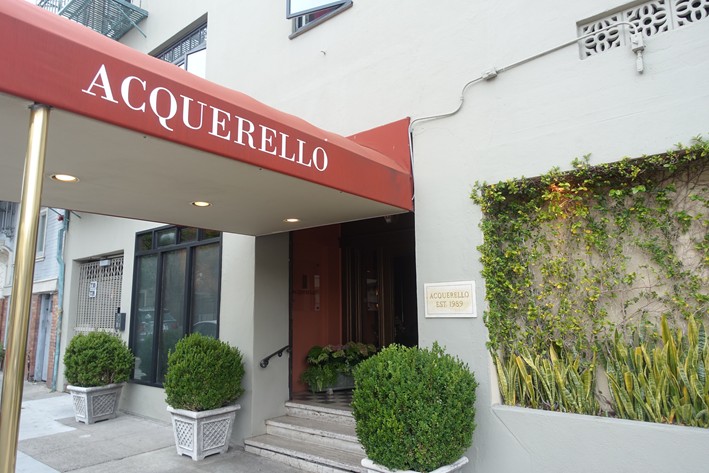


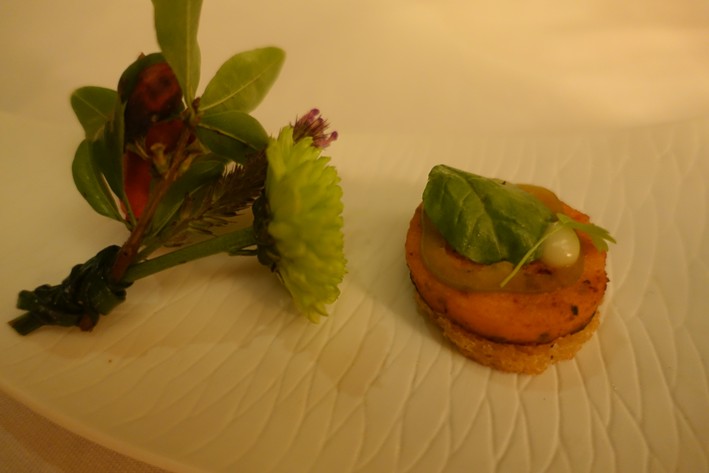

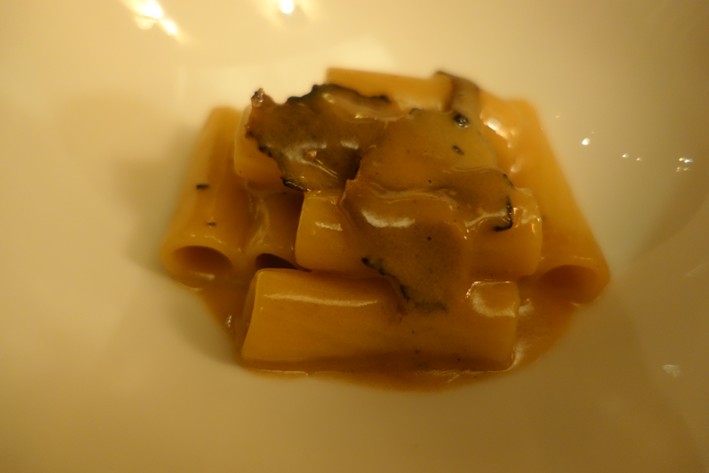

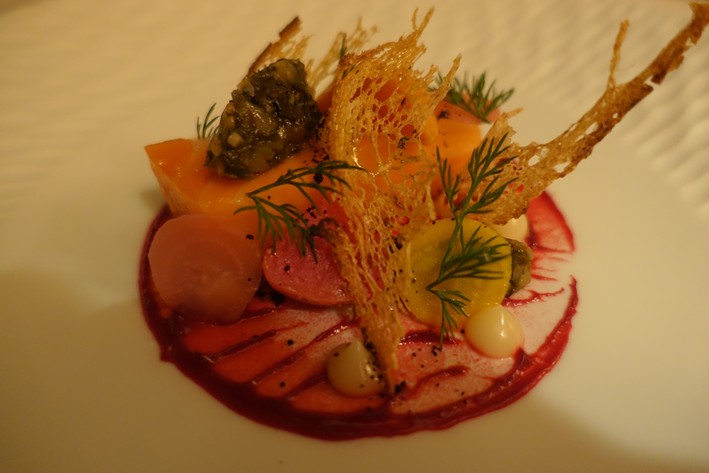

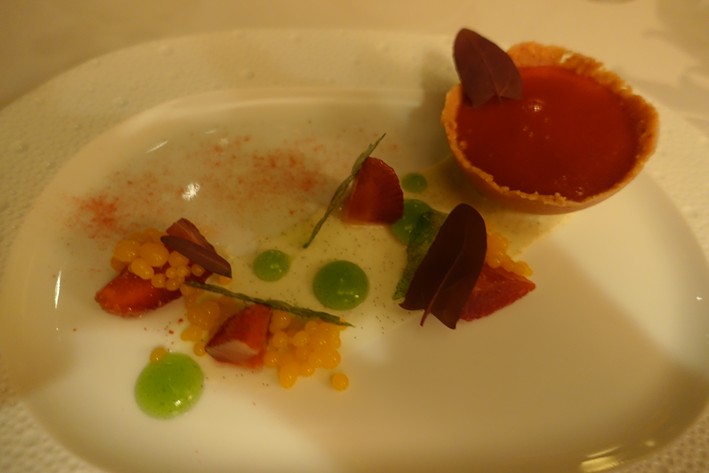

Add a comment
Thank you for submitting your comment, this will be checked and added to the website very soon.
User comments